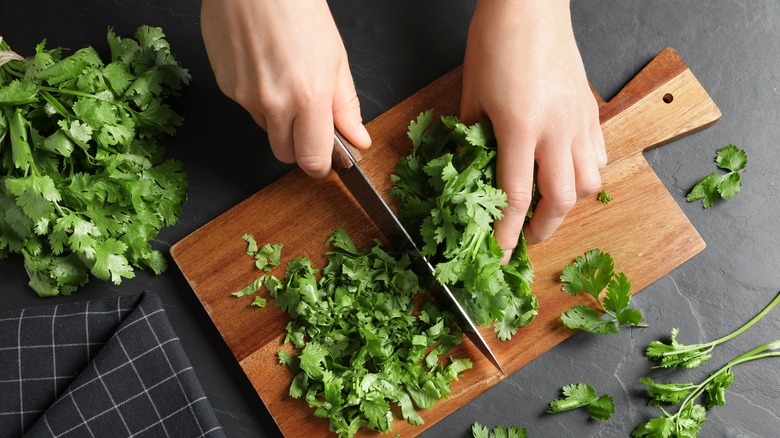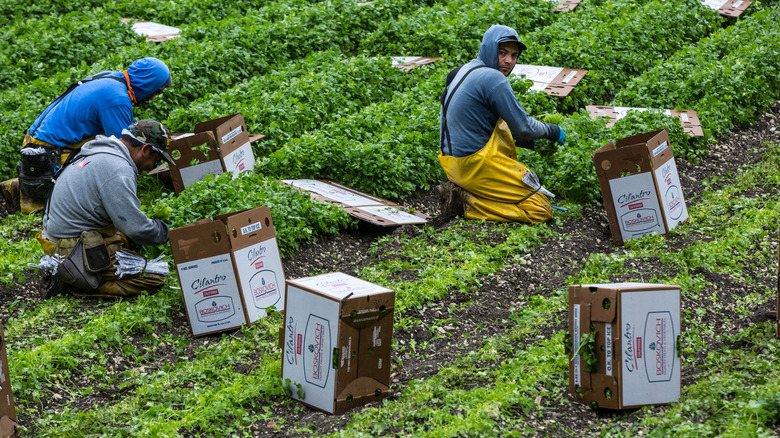Most Of The World's Cilantro Comes From This Country
Global food enthusiasts love the aromatic smell and fresh citrusy taste of cilantro, which features in many Latin American, Caribbean, and Asian dishes, particularly ones from India, Mexico, Vietnam and Thailand, notes Wisconsin Horticulture. From chutneys to curries, Mexican salsas, seafood dishes, pestos, and soups, you'll find hints of the tangy herb in diverse recipes. In fact, it's even referred to as "Chinese parsley" in some Asian cultures. Dating back thousands of years in India, China, and ancient Egypt, cilantro was once considered an aphrodisiac and sometimes held sacred status as a giver of immortality.
Today, nutritionists deem cilantro as a valuable health source, with Shape pointing out its antioxidant properties that help fight inflammation and combat free radicals. The publication notes that it has shown to aid in decreasing the likelihood of heart disease and cancer. It also provides beneficial amounts of iron, folate, and vitamins C, A, and E, according to the U.S. Department of Agriculture.
You'd think that such a widespread and beloved herb would proliferate on every continent. But the most cilantro production actually comes from two countries, one of which exports the highest volume worldwide.
Coriander seeds versus cilantro leaves
When pinpointing where most of the world's cilantro originates, it's important to understand that cilantro is the leafy part of a coriander plant, which belongs to the Apiaceae botanical family, per Produce Blue Book. As such, two different production markets exist — one for the cultivation and export of coriander seeds and the other for producing, harvesting, and potentially exporting cilantro leaves. Chefs use dried coriander seeds as a spice, while cilantro leaves work their aromatic magic in the form of an herb.
World Integrated Trade Solution reports that the top exporter of coriander seeds in 2019 was India, followed by the European Union, Italy, the Russian Federation, and Bulgaria. But the United States and Mexico serve as the most prolific growing regions for the plant and its resulting cilantro leaves, explains Produce Blue Book. While Mexico exports the most cilantro, the United States, particularly California, actually produces more. California's cilantro bounty occurs year-round. Arizona contributes from November through March. Oregon and Washington growers join in from May through November. After harvesting, cilantro stays fresh for a minimum of two weeks, notes Food Source Information.
Despite cilantro's immense popularity, it curiously holds a soap-like taste for 4% to 21% of people, according to a study by Flavour Journal. That all comes down to genetics, particularly an ability to taste the chemical citronellol in cilantro, which is also a popular soap fragrance, explains Today.

